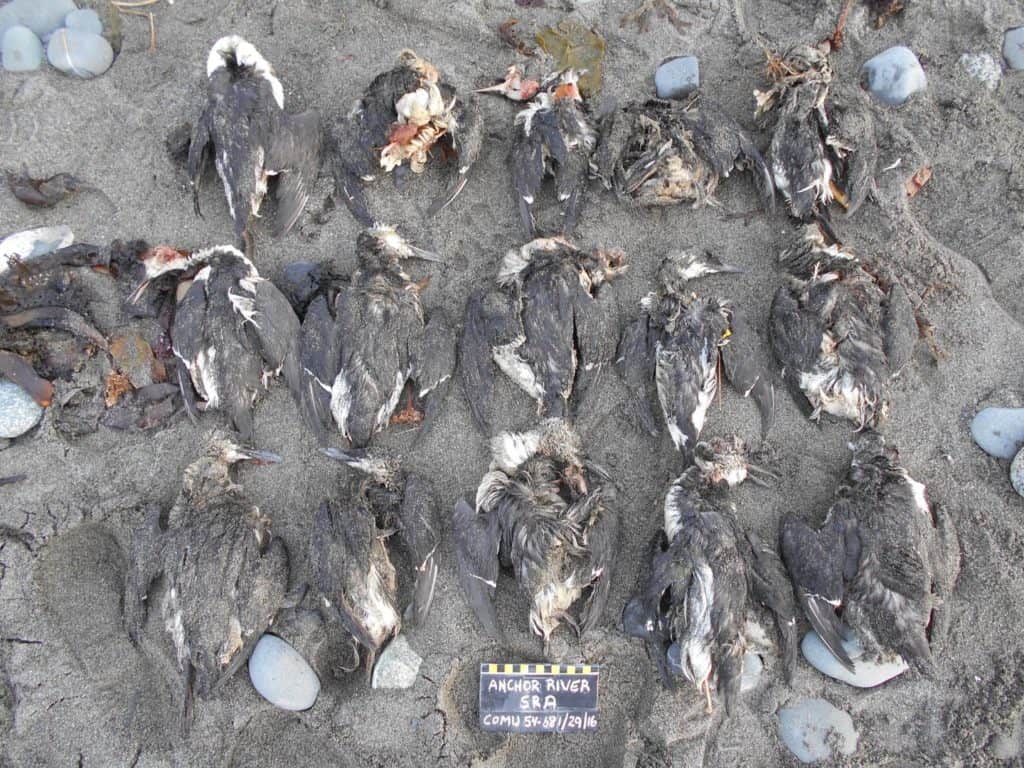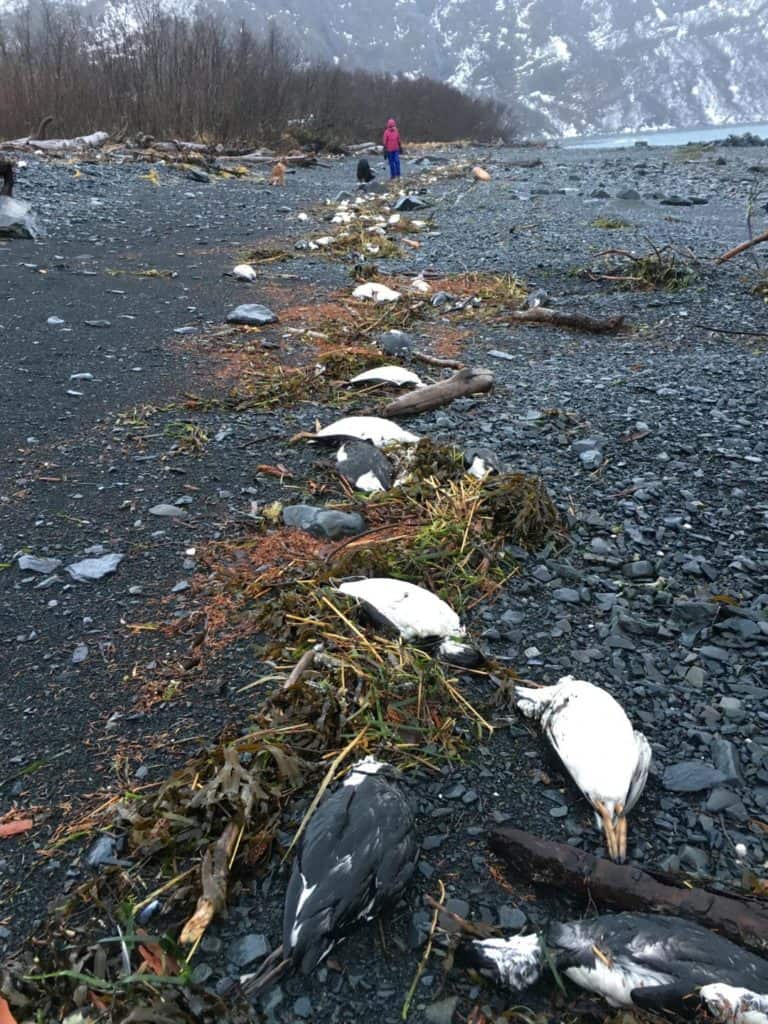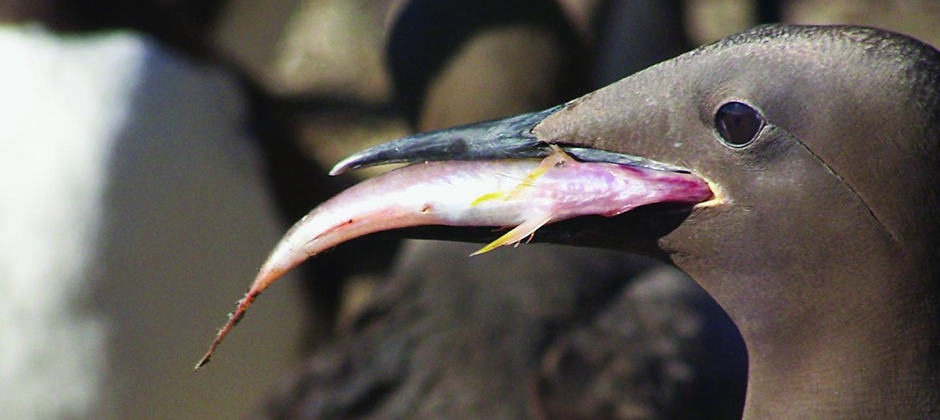Share this article
‘The Blob’ caused massive seabird die-off
Warm water conditions referred to as “The Blob” in the North Pacific Ocean may have prompted the deaths of thousands of common murres in one of the largest seabird die-offs of the millennium.
“The system shifted fairly suddenly and could no longer accommodate the number of murres that it had been able to sustain in previous years,” said Julia Parrish, a professor in marine sciences at University of Washington and one of the co-authors of a study published recently in PLOS ONEon the seabird die-off.
In May 2015, common murres (Uria aalge) began to wash up dead on the Pacific coast of North America from the Pribilof Islands in the Bering Sea all the way down to California, though most dead birds were found in the Gulf of Alaska. The die-off lasted through April 2016 — much longer than similar die-offs that affected tufted puffins (Fratercula cirrhata) and crested auklets (Aethia cristatella) at the end of 2016.

Adult common murres return to island and sea stack colonies from California to Alaska, spending three months during each summer to breed. A single chick takes two parents to hunt for fish, such as the rockfish — a staple of the California murre diet — pictured here. ©Jane Dolliver
Normally, die-offs in which birds wash onto beaches will last anywhere between one and three months, said Parrish, who is also the executive director of the Coastal Observation and Seabird Survey Team (COASST), an organization of citizen scientists who comb beaches across the northeast Pacific recording dead seabirds. The organization contributed much of the data the researchers have on this and other seabird die-offs.
At first, researchers believed that toxins in the water and possibly algal blooms might be responsible for the die-offs since they affected zooplankton and the smaller forage fish that murres feed on. But necropsies on birds sent for laboratory testing ruled out algae poisoning, disease and bacteria, instead finding the birds were emaciated and likely died from starvation. Scientists still didn’t know what caused the starvation, although some point to warmer weather conditions caused by el Niño.

Over 6,500 common murre carcasses were found washed ashore near Whitter, Alaska on Jan. 1 and 2, 2016. This translates to about 8,000 bodies per mile of shoreline — one of the highest beaching rates recorded during the mass mortality event. ©David B. Irons
But now, Parrish and her co-authors have developed a more focused, comprehensive picture about how these conditions may have killed so many murres.
“The Blob,” also known as the Northeast Pacific Marine Heatwave, refers to a period of uncommonly warm water in an area the size of Canada in which surface temperatures were up to 4 degrees centigrade warmer than usual for about 3.5 years. This phenomenon lasted from the fall of 2013 through a powerful el Niño period in 2015-2016. The warm water lasted so long that it changed the entire working of the ecosystem in the area.
Parrish and her colleagues reviewed fisheries studies that were also conducted during the die-off period and discovered that there were less forage fish available, and the ones that were there were smaller.
If you’re a fish-eating seabird like a murre, she said, you have to look harder to find food, and that food is poorer quality.
They also found that the warmer weather may have caused larger fish like salmon, pollock and cod to develop a higher metabolism. These species share the same prey as murres in the area, and they likely had to eat more, creating more competition for murres.
Salmon also hunt in most of the same areas along the continental shelf as murres, Parrish said, and the warm water area stretched as far the fish could swim or as far as murres could fly in almost every direction. Most of the murres in the area couldn’t escape this ecological trap.
“These birds were definitely, definitely stressed out,” she said.
The discovery may also reveal clues as to why other animal die-offs occurred during this period, such as that of tufted puffins, crested auklets, and even baleen whales and sea lions.
Header Image: Common murres washing onto beaches in the Homer, Alaska, area was so abundant in early 2016 that volunteer beach surveyors were forced to collect and photograph them in batches. ©COASST








